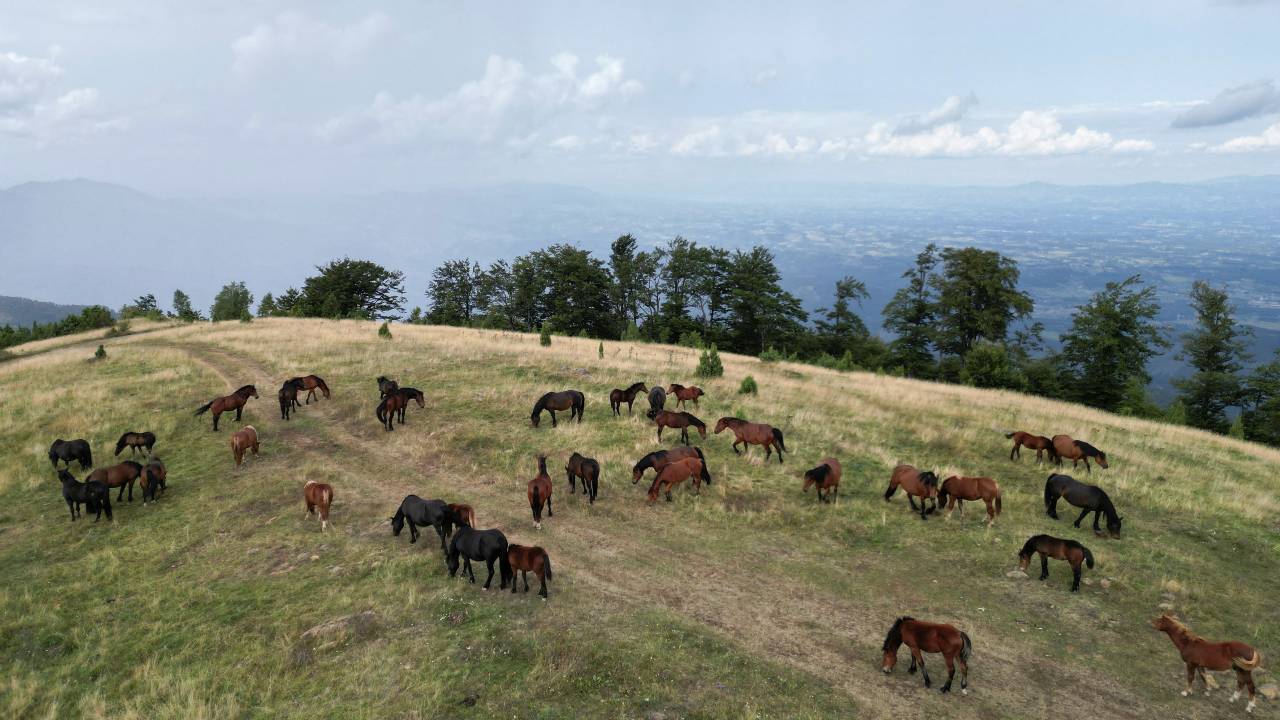
A herd of about 40 wild horses, once used for farm work, now roam free on Stolovi mountain in Serbia's southwest. /Zorana Jevtic/Reuters
A herd of about 40 wild horses, once used for farm work, now roam free on Stolovi mountain in Serbia's southwest. /Zorana Jevtic/Reuters
Today, a herd of about 40 wild horses, free to roam as they please, can be seen grazing lazily on dry grass over the rugged Stolovi mountain in Serbia's southwest.
But while there is an untouched beauty to these seemingly untamed animals, in reality, they have only recently been allowed to wrest back control of their own lives.
The horses, mainly from the sturdy Bosnian Mountain Horse breed which were traditionally used in agriculture, were brought to Mt. Stolovi in the 1970s by their owners who hoped to save on feeding costs.
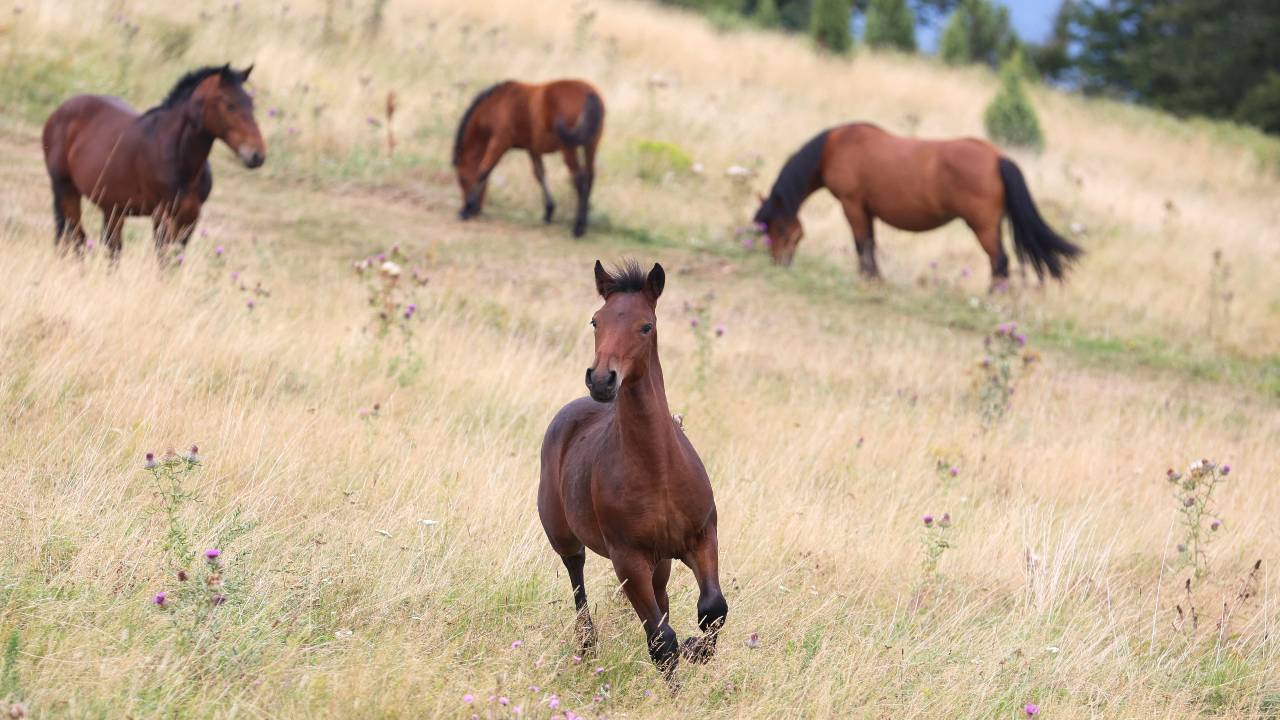
The horses are mainly from the sturdy Bosnian Mountain Horse breed which were traditionally used in agriculture. /Zorana Jevtic/Reuters
The horses are mainly from the sturdy Bosnian Mountain Horse breed which were traditionally used in agriculture. /Zorana Jevtic/Reuters
But with the modernization of agriculture, they were no longer needed and left to their own devices.
And away from humans, they have gradually reverted to behavior more closely resembling that of wild horses.
"They... foaled here, suffered, multiplied, and so it went on," explains 73-year-old Slavoljub Nikolic, a farmer from the region.
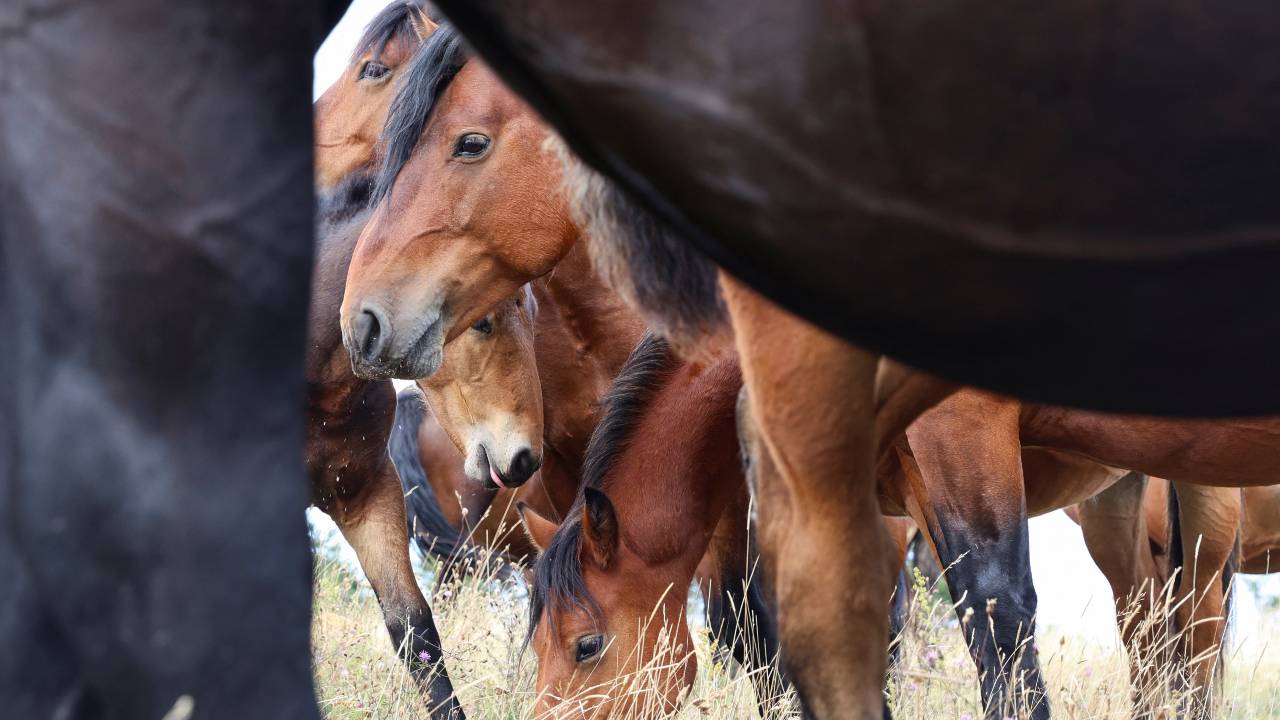
The animals were brought to Mt. Stolovi in the 1970s by their owners who hoped to save on feeding costs. /Zorana Jevtic/Reuters
The animals were brought to Mt. Stolovi in the 1970s by their owners who hoped to save on feeding costs. /Zorana Jevtic/Reuters
Half a century ago, almost every other rural household in Serbia had a horse.
However, over the decades, with the arrival of modern agriculture, the Balkan country's tradition of horse breeding radically declined.
In 1975, there were more than 290,000 of the animals in Serbia. Nearly 50 years later that figure has dropped to around 14,000 in 2021, nearly a 95 percent reduction.
"No one needs horses for work any longer," Nikolic says.
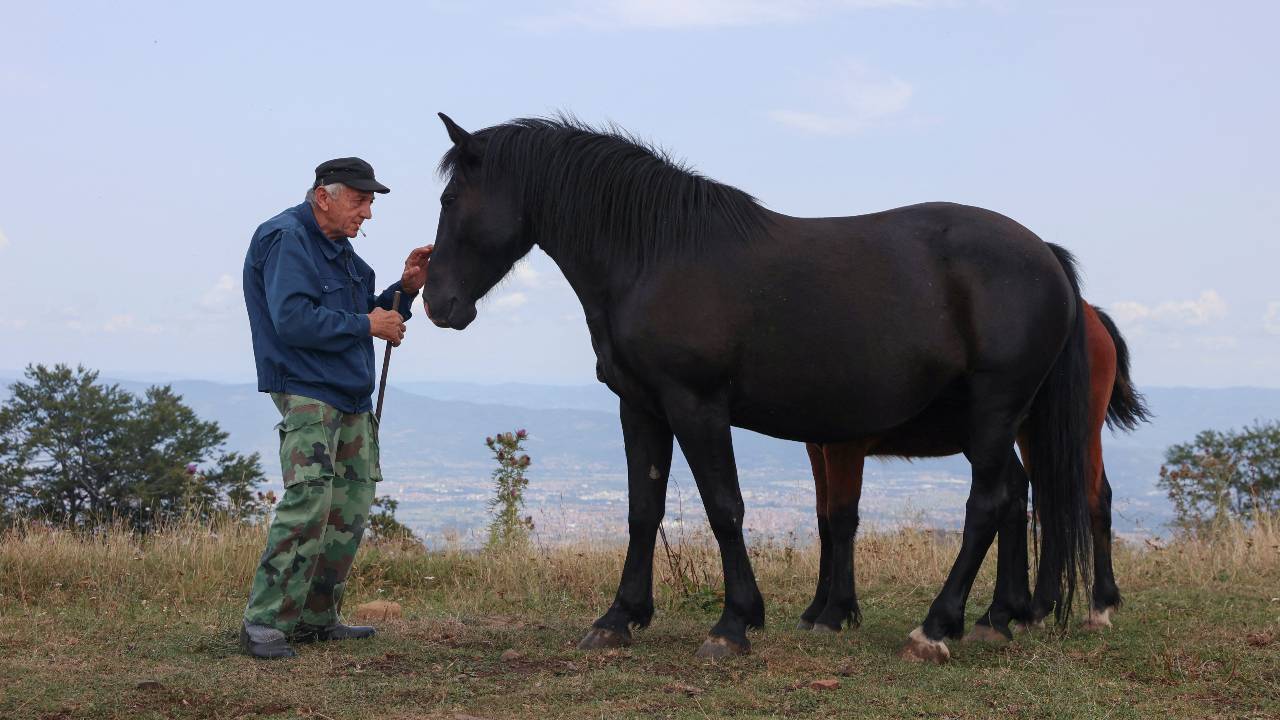
Local farmer Slavoljub Nikolic says humans no longer need the horses for work. /Zorana Jevtic/Reuters
Local farmer Slavoljub Nikolic says humans no longer need the horses for work. /Zorana Jevtic/Reuters
"It's been like that for the last 10 years or so. There is no sales here. In two or three years maybe you can sell a colt for €500 to €600 ($540-648) and even that is rare," he adds.
But this has allowed herds like those in Nikolic's area to thrive with minimal human intervention across the country.
From the farm to the mountain
Stolovi's wild herd is the second biggest in Serbia. One in the southern Suva Planina mountain counts around 100 horses, while the other in the Vlasina plateau numbers just 20.
Nikolic says he and other farmers sometimes climb the mountain to bring the horses a sack of corn or treats such as carrots and apples.
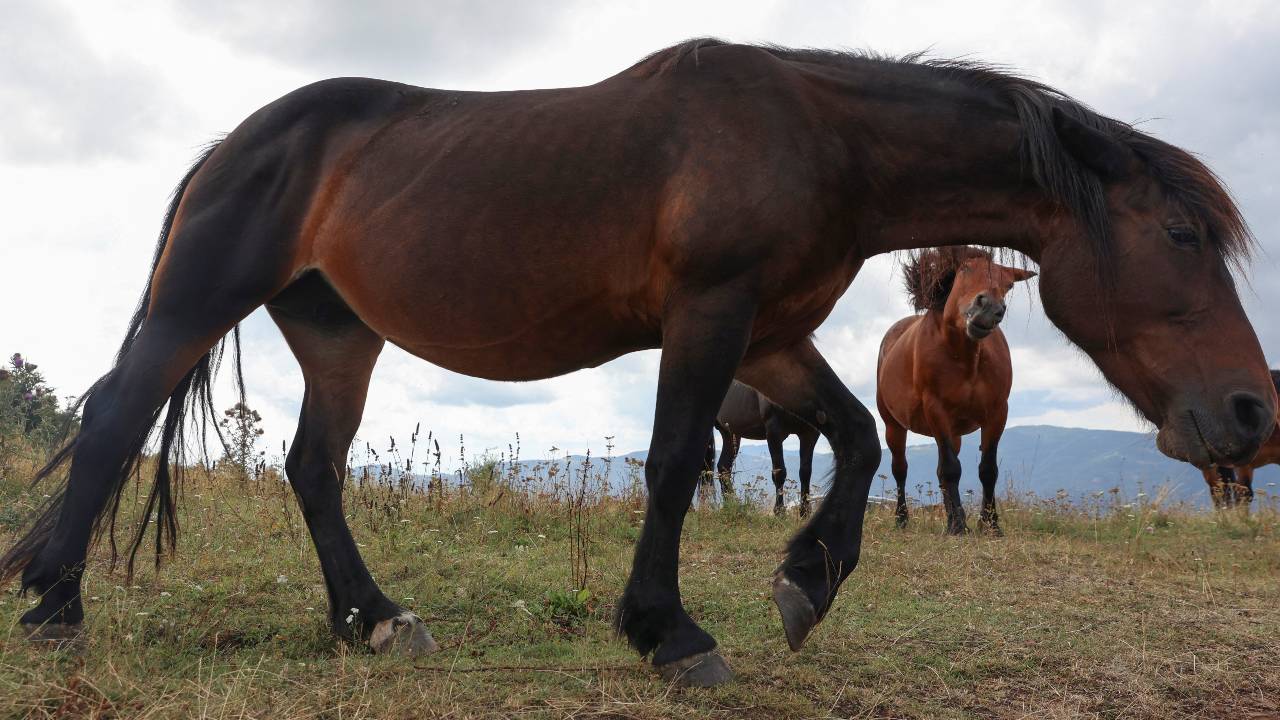
Since 1975, there's been an almost 95 percent reduction in the number of horses in Serbia. /Zorana Jevtic/Reuters
Since 1975, there's been an almost 95 percent reduction in the number of horses in Serbia. /Zorana Jevtic/Reuters
During hot summers they also bring them water from a cistern.
With plenty of grass and open spaces on the mountain range, the animals are healthy and mainly die from predators and old age.
"For 52 years I did not see a single one that died from an illness," Nikolic says.
Dangers in the wild
He adds that despite people trying to bring the horses back to the valley from Mount Stolovi, they would often escape the humans stables, preferring instead to return to the mountain – even with the threat of wolves, bears, horse thieves and harsh winters.
"They can dig through snow (for grass), hide in ravines... they know every slope, every corner," Nikolic says.
But there are other more modern threats facing the feral horses, according to Nikolic, who says tourists and loggers have started posing a danger to the herd.
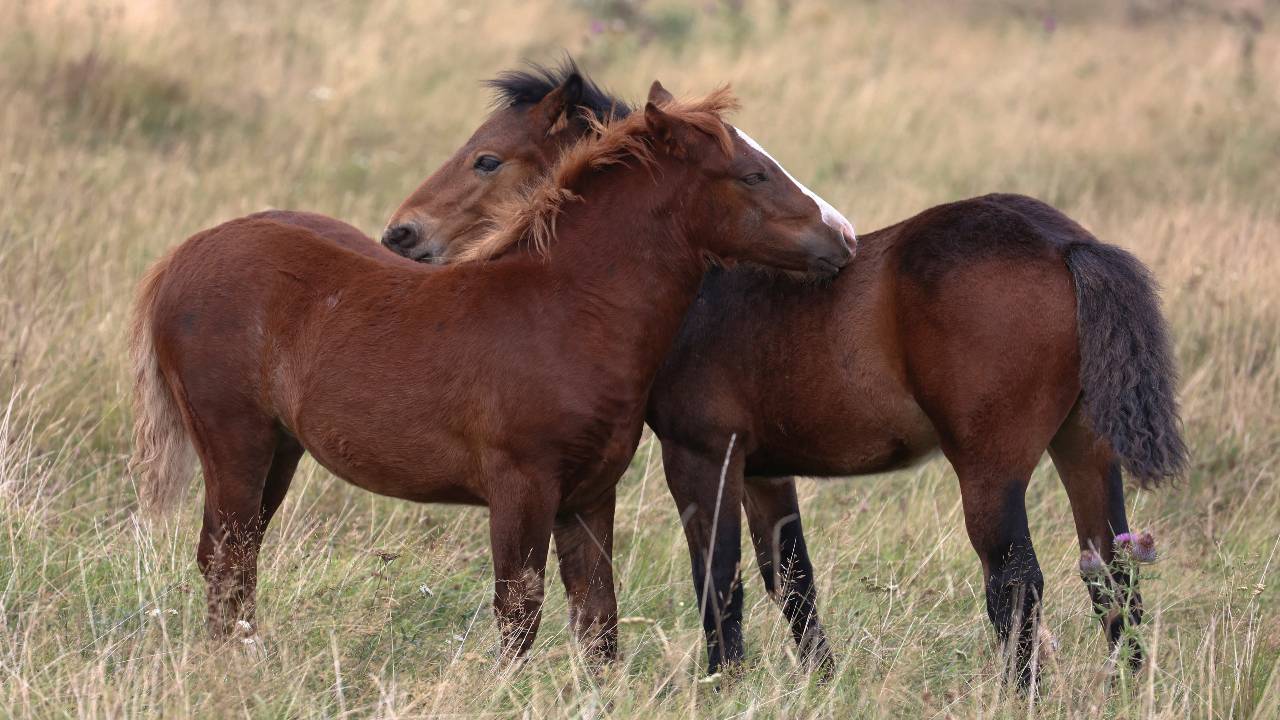
Nikolic says that nowadays, the Stolovi horses 'are not needed by anyone.' /Zorana Jevtic/Reuters
Nikolic says that nowadays, the Stolovi horses 'are not needed by anyone.' /Zorana Jevtic/Reuters
He recounts that recently, some visitors spooked the animals and one of the horses was killed when it tumbled into a ravine.
But despite renewed human intervention, the animals continue to make the mountain range their own.
"They were brought here half a century ago, every year when it started, they were spending summers and winters here," says Nikolic.
Now, with little human demand on the animals, they have permanently installed themselves high above the valley and are free to come and go as they please.
As the farmer says: "They are not needed by anyone."
Subscribe to Storyboard: A weekly newsletter bringing you the best of CGTN every Friday
Source(s): Reuters